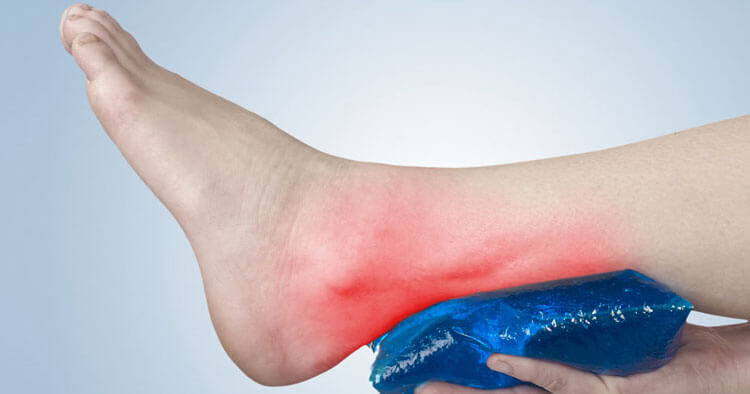Muscle Pain and Tendinopathy, Sports Injuries and Management
What’s Causing My Achilles Tendon Pain?
Achilles Tendon Pain Is Not Exclusively Something That Athletes Suffer
Achilles tendon pain, or Achilles tendon injury isn’t confined exclusively to the athletic population. The development of Achilles tendon pain can happen in pretty much anyone, whether you are an athlete involved in jogging and jumping activities, or not. Most tendon injuries are the result of overload of the tendon, more commonly regarded as overuse in the general public. Tendons as we age become more prone to overload, as tendons degenerate with increasing years which is part of the reason why many Achilles and other tendon complaints are more common in individuals on the wrong side of 30. Athletes, or otherwise who repeat the same motions over and over again in their jobs, sports, or daily activities are more likely to irritate their tendons, Achilles, or otherwise. Usually this overload to the tendon is associated with a sudden change in load, which could manifest itself as an increase in training load, work hours, a return to training, or work following a break, or holiday, the beginning of a new type of training, or employment…. Any activity that puts the Achilles under strain without allowing time for the tissue to adapt to said changes, before subsequently reapplying the load will place the tissue at risk of becoming reactive and causing Achilles tendon pain.
What Are Tendons?
Tendons are those tough ropey tissues that you see connecting your muscles to bone. Achilles tendon pain and injury usually occurs near its attachment point down towards the heel bone in what is referred to as the “mid tendon”. The mid tendon is situated a few centimeters above the insertion into the heel, this mid tendon injury is considered a non-insertional tendinopathy and is different to and Achilles tendon injury where the site of symptoms are right where the tendon attaches to the heel bone. Blood supply throughout the length of the Achilles tendon is poor, as shown by the small numbers of blood vessels per cross-sectional area in tendons, this is especially so in the region 4-6cm above the calcaneus in the mid tendon. This poor vascularity in the tendon is considered to contribute to a slow healing rate following overload and trauma.
Frequently A Slow Onset And A Long Road To Recovery
Achilles tendon irritation is common and is an injury that can occur both gradually, or suddenly. Generally, you are more likely to have a sudden injury to your Achilles tendon if the tendon has been weakened over time, sudden injuries are often associated with an unaccustomed high force. A prime example of this is someone following an extended break returning to play tennis, or a similar explosive sport and in doing so push off forcefully to chase down a ball, or push off into a gap playing touch rugby… Severe injuries like this can include partial tears, or complete rupture of the Achilles tendon and will present as immediate pain and dramatically reduced function.
Mild Achilles tendon injury where the individual feels pain, or stiffness around the heel area, but function is mostly preserved is more common that complete ruptures. The onset of this low grade Achilles tendon pain is often of much slower onset, but not uncommonly it will gradually become irritating enough that the person seeks professional help to settle it. I will regularly see patients at my Sydney physio practice who come in after many months of symptoms, where they assumed it would self settle but find that it just continues to persist and impact their life and chosen leisure activities. Regardless of the severity Achilles tendinopathy be it of sudden onset, or more gradual like most tendinopathies symptoms can take weeks and sometimes months to completely settle, even in very mild cases.
Labeling Achilles Tendon Pain
Professionals within the medical industry often use different terms to describe tendon injury. Common terms include:
- Tendonitis (sometimes written as tendinitis): “itis” part of the word indicates inflammation so what tendonitis or tendinitis refers to is inflammation of the tendon. This is generally no longer the preferred term when referring to tendon pathology such as occurs in Achilles tendon pain, because studies have shown that inflammation is rarely the cause of tendon pain.
- Tendinosis: The “osis” suffix refers an abnormal or diseased state. So the word tendinosis refers to an abnormal state, in case to the Achilles tendon. Meaning there is a situation where degenerative change is present and tiny microtears in the tendon are present. This is something that doesn’t occur rapidly, with Achilles tendon pain tendinosis develops over time and as discussed overload to the tendon is a common contributor to tendinosis Achilles tendon pain.
- Tendinopathy: “opathy” really just denotes change (‘change in’) hence tendinopathy means ‘change in’ the tendon, Achilles tendinopathy is currently the term many physiotherapist and other medical clinicians working with musculoskeletal complaints use when talking about, or labelling tendon issues such as Achilles tendon pain. It operates more as a blanket term and can cover the possibilities of the change in the tendon including, inflammation, degeneration, tears…
Although the difference between labeling tendon injury as ‘tendinitis’, ‘tendinosis’ or , tendinopathy’ seems unimportant what is going on in the tendon has implications for the management of the condition. Since ice, anti-inflammatories and rest don’t typically “fix” a tendon issue with the suffix ‘osis’, it means getting the name and diagnosis right is the first step towards getting better.
Disclaimer: Sydney Physio Clinic provides this information as an educational service and is not intended to serve as medical advice. Anyone seeking specific advice or assistance on What’s Causing My Achilles Tendon Pain? should consult his or her physiotherapist, sports medicine specialist, orthopedic surgeon or otherwise appropriately skilled practitioner.


